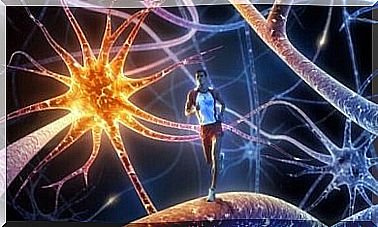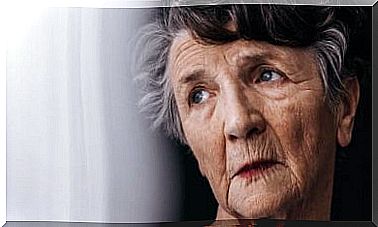What Is Ehlers Danlos Syndrome?

Every day, medicine and science are advancing, as studies on certain pathologies are numerous. However, there are a number of diseases which, due to their low incidence in the population, are not studied like more common ones. They are considered rare diseases and Ehlers Danlos syndrome is one of them.
Each region of the world has its own assessment of what is and is not considered a rare disease. However, these proportions are very low in the population. For example, in Europe, diseases that affect 1 in 2,000 people, or 0.05% of the population, are considered rare.
In this article, we present one of these diseases classified as rare: Ehlers Danlos syndrome (EDS). It mainly affects connective tissue. With this article, we want to support and give visibility to one of the many disorders that need to be seen and heard.

The concept of Ehlers Danlos syndrome
Ehlers Danlos syndrome, also known as EDS, is a group of genetic and inherited connective tissue diseases that directly affect collagen, involving the skin, joints, and the walls of blood vessels. In France and other parts of the world, it is considered a rare disease.
This syndrome manifests itself in people who suffer from it by a fragility of the skin. As well as by unusual flexibility and elasticity of the joints. There are, however, several types with their own peculiarities. Although it should be noted that these characteristics tend to be repeated in all cases.
The different types of Ehlers Danlos syndrome
There are up to thirteen different types of Ehlers Danlos. The most common, in its low incidence, are the classic, hyperlaxic, vascular and cardio-valvular types. However, the full list of types that can be found on existing classes of Ehlers Danlos syndrome would be:
- Classic
- By deficiency of tenascina-X (type similar to Ehlers-Danlos syndrome of classic type)
- Cardio-vulvar
- Hyperlaxic (hypermobile)
- Vascular
- Kyphoscoliosic
- Arthrochalasic
- Dermatosparaxis
- Fragile cornea syndrome
- Dysplastic-spondylogic
- Musculo-contractural
- Periodontal
- Myopathic
Symptoms of Ehlers Danlos syndrome
People who suffer from this type of syndrome begin to experience a series of changes and pains which are more and more continuous in their daily life. While it is true that each of these types has characteristic symptoms, they share, as we have already indicated, a series of frequent symptoms.
It should be noted that just having any of these symptoms is not a valid argument for claiming that you have Ehlers Danlos Syndrome, just like having none of them does not mean that you have Ehlers Danlos Syndrome. have the opposite.
The most common is back pain. Specifically, the affected person may feel that their back is overloaded and that it is quite easy to generate contractures. The sensation that sufferers say they get is like “carrying a bag of cement all the time”.
Another of the most common symptoms is ligament hyperlaxity. This means that these people are extremely elastic since their ligaments would resemble “the strings of a detuned guitar”.
Other coincidences between the different cases of Ehlers Danlos would be the laxity of the skin. As well as the ease with which it is damaged. A simple, unimportant blow can give them a huge bruise or some skin injury that wouldn’t matter in someone who doesn’t have this syndrome.
Flat feet can be another hallmark of people with this syndrome. This is why they also have foot cramps and walk poorly. The proof would be the soles of their shoes, because one side will always remain more worn than the other. The appearance of certain vision problems is also noticeable.
The less pleasant part of Ehlers Danlos syndrome is accompanied by ease of joint mobility, which removes the cartilage that connects the joints, causing the bone to move, resulting in severe dislocations in some cases.
With this syndrome, it is necessary to have some vigilance before developing arthritis because it can appear early. On the other hand, these people have very soft skin, which, being so delicate, sometimes looks totally velvety.

Diagnosis and treatment
In most cases, people who suffer from this disease have a long and dense journey. Indeed, it takes on average at least 3 years to obtain a diagnosis. In many cases, a diagnosis of fibromyalgia is wrongly made.
What coincides between fibromyalgia and chronic fatigue syndrome is who makes the diagnosis. Usually a specialist in rheumatology. Although this is true, these are diseases that have many points in common. And it is not surprising that they are confused.
The same goes for the treatment to follow, since there is currently no cure. However, after a clear diagnosis, it is usually necessary to continue physiotherapy and rehabilitation sessions to try to stop some joint mobility.
Likewise, in the context of certain types, such as the cardio-valvular type, a cardiological examination will be necessary to rule out Marfan syndrome. It is very common in this type of Ehlers Danlos and very dangerous for the health of the person if not treated in time.
In any case, in case of suspicion or diagnosis, it is advisable to contact the National Association of Ehlers Danlos Syndromes for advice on whatever is needed.










